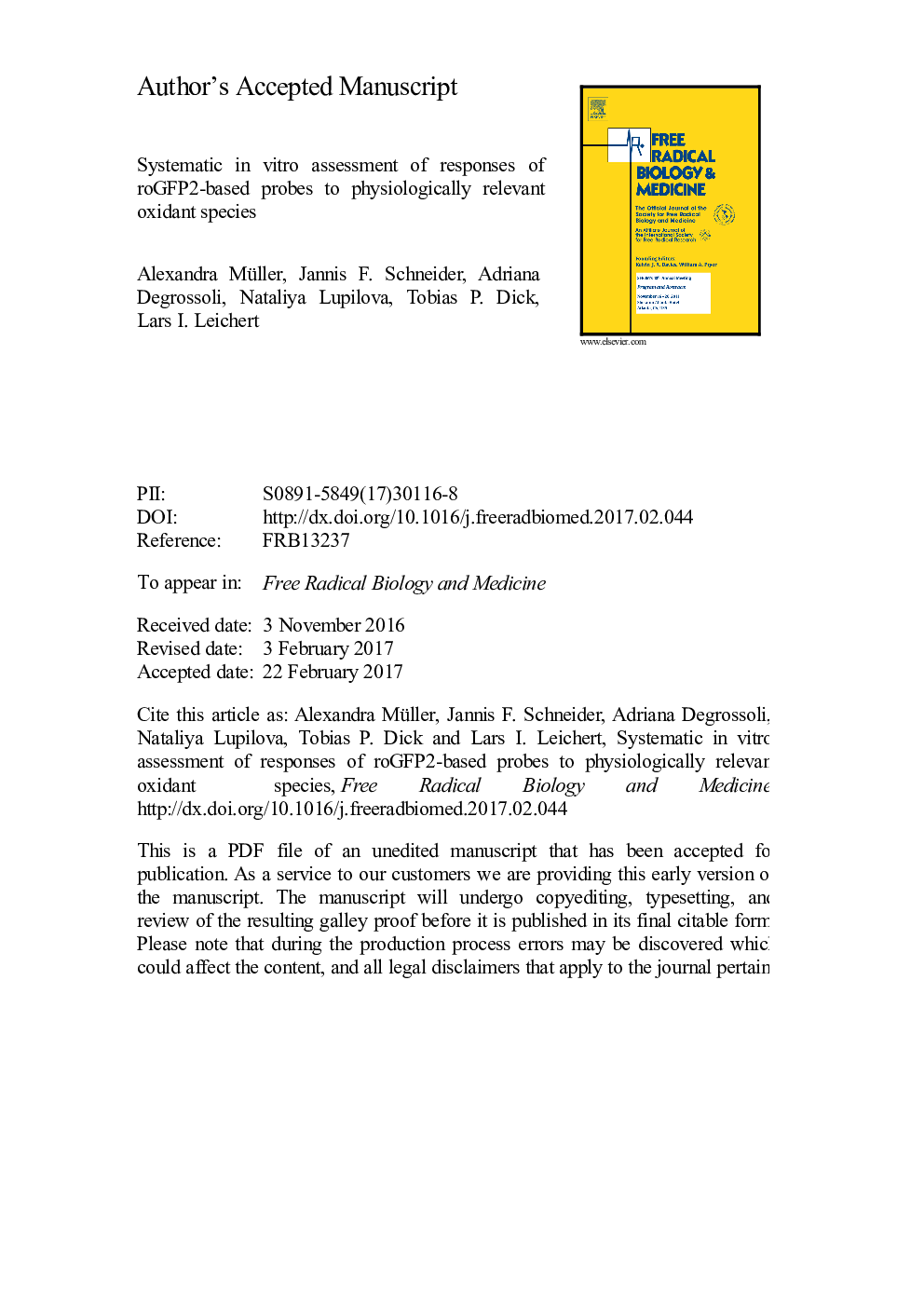| Article ID | Journal | Published Year | Pages | File Type |
|---|---|---|---|---|
| 5501790 | Free Radical Biology and Medicine | 2017 | 40 Pages |
Abstract
The genetically encoded probes roGFP2-Orp1 and Grx1-roGFP2 have been designed to be selectively oxidized by hydrogen peroxide (H2O2) and glutathione disulfide (GSSG), respectively. Both probes have demonstrated such selectivity in a broad variety of systems and conditions. In this study, we systematically compared the in vitro response of roGFP2, roGFP2-Orp1 and Grx1-roGFP2 to increasing amounts of various oxidant species that may also occur in biological settings. We conclude that the previously established oxidant selectivity is highly robust and likely to be maintained under most physiological conditions. Yet, we also find that hypochlorous acid, known to be produced in the phagocyte respiratory burst, can lead to non-selective oxidation of roGFP2-based probes at concentrations â¥2 µM, in vitro. Further, we confirm that polysulfides trigger direct roGFP2 responses. A side-by-side comparison of all three probes can be used to reveal micromolar amounts of hypochlorous acid or polysulfides.
Keywords
PBSHOClGSSGGSHGSNODTTAT-2GFPFPLCGRX1H2SRogfp2Spermine NONOateONOO−Hydrogen peroxidesuperoxide anionEDTAEthylenediaminetetraacetic acidhypochlorous acidDEANOdiethylamine NONOatedithiothreitolfast protein liquid chromatographyHydrogen sulfidePhosphate buffered salineNitric oxideH2O2green fluorescent proteinPeroxynitritePolysulfidesreduced glutathioneGlutathioneoxidized glutathioneGlutaredoxin 1
Related Topics
Life Sciences
Biochemistry, Genetics and Molecular Biology
Ageing
Authors
Alexandra Müller, Jannis F. Schneider, Adriana Degrossoli, Nataliya Lupilova, Tobias P. Dick, Lars I. Leichert,
